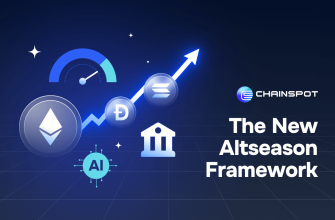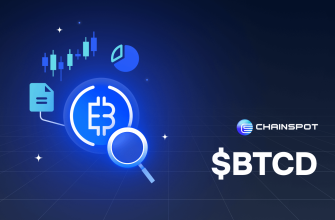- 0) What arbitrage is (and isn’t)
- 1) The arithmetic of edge (and why most “arbs” aren’t)
- 2) Core arbitrage types (with realistic examples)
- 2.1 Cross-exchange (CEX↔CEX, DEX↔DEX, CEX↔DEX)
- 2.2 Triangular arbitrage (within one venue)
- 2.3 Perpetual funding arbitrage (cash-and-carry light)
- 2.4 Dated futures cash-and-carry (classic basis)
- 2.5 Cross-chain arbitrage
- 2.6 Oracle timing arbitrage
- 2.7 Stablecoin dislocations
- 2.8 Statistical/relative-value arbs
- 3) Infrastructure stack (what you actually need)
- 3.1 Accounts & wallets
- 3.2 Data & alerts
- 3.3 Execution
- 3.4 Routing & rebalancing
- 3.5 Risk & logging
- 4) Walk-throughs you can copy (numbers included)
- 4.1 CEX↔DEX cross
- 4.2 Triangular inside one DEX
- 4.3 Funding harvest (spot long + perp short)
- 4.4 Cross-chain spread
- 5) Risks (ranked by how often they bite)
- 6) Playbooks by skill level
- 6.1 Beginner (manual, small size)
- 6.2 Intermediate (semi-automated)
- 6.3 Advanced (market-making & relative value)
- 7) Human factors (the edge almost nobody logs)
- 8) Compliance & ethics (trade longer than one season)
- 9) Checklists (printable)
- Pre-session
- Pre-trade
- Post-trade
- 10) Frequently asked questions
- 11) Case study: turning a messy day into clean bps
- 12) Why execution costs are your real moat
- 13) Your standing edge: Chainspot for rotations & rebalances ✅
- Final word
How to find, price, and execute edge across CEXes, DEXes, and chains—without blowing up your account.
Quick CTA before we dive in: most profitable arbitrage requires moving capital quickly across chains and venues. Route your swap + bridge in one click with Chainspot, trim basis-point drag, and earn cashback (plus referrals that share revenue with you): https://app.chainspot.io
0) What arbitrage is (and isn’t)
Arbitrage is taking simultaneous or nearly simultaneous offsetting positions to capture price differences for the same risk. In classic markets that’s “buy low here, sell high there.” In crypto, arbitrage spans:
-
Cross-exchange price gaps (CEX↔CEX, DEX↔DEX, CEX↔DEX)
-
Triangular loops within one venue (e.g., USDC→ETH→WBTC→USDC)
-
Cross-chain spreads (token trades at different prices on different chains)
-
Funding/basis differentials (spot vs perpetual futures; spot vs dated futures)
-
Oracle timing mismatches (on-chain price feed lags vs real price)
-
Stablecoin dislocations (temporary <$1 prints; basket stables deviating from NAV)
-
Inventory/fee arbitrage (maker rebates vs taker fees; routing harvests)
Not arbitrage: prediction, momentum, “hopium,” or taking additional risk that isn’t fully hedged. If you can lose money from the underlying moving after you enter your “arb,” it’s not a pure arb—it’s a basis trade or relative-value bet. That’s fine, but call it what it is.
1) The arithmetic of edge (and why most “arbs” aren’t)
Arbitrage lives in basis points. Your gross edge is pointless if frictions eat it.
Let’s define a simple profit test:
Net Edge (%) = Price Edge – Fees – Slippage – Gas/Bridge – Funding/Carry – Inventory Cost
-
Price Edge: % difference you can lock in across legs
-
Fees: taker/maker fees, RFQ spreads, withdrawal fees, loan interest
-
Slippage: the realized price impact from your size
-
Gas/Bridge: on-chain gas, bridge fees, route bps
-
Funding/Carry: if the leg is a perp/future, the cost/receipt over holding period
-
Inventory Cost: the opportunity cost or borrow cost of maintaining inventory on multiple venues
If Net Edge > 0 with high fill probability, you have a trade. If it’s 3–5 bps, you need automation and volume. If it’s 50–200 bps with speed and size available, that’s attractive even manually—if you can settle fast and not get sandwiched.
Practical rule: before coding anything, build a spreadsheet for three representative sizes (small/med/large). For each candidate trade, atomize costs and compute post-trade cash. If the math doesn’t sing on paper, it won’t sing on-chain.
2) Core arbitrage types (with realistic examples)
2.1 Cross-exchange (CEX↔CEX, DEX↔DEX, CEX↔DEX)
Setup: Same asset quoted at different prices on two venues.
Example (CEX↔DEX):
-
On a DEX pool, 1 ETH = 3,200 USDC (mid). On a CEX order book, 1 ETH = 3,240 USDC.
-
Gross edge: (3,240−3,200)/3,200 = 1.25% (125 bps).
Friction sanity check (single 1 ETH clip):
-
DEX taker fee via aggregator ≈ 5–10 bps (varies), slippage maybe 10–20 bps if pool is deep, gas say 2–5 bps equivalent (chain dependent).
-
CEX taker fee 5–10 bps.
-
Net before transfers: 125 − (10+15+5+8) ≈ 87 bps.
-
If you must transfer from DEX chain → CEX, add bridge/withdrawal costs and time. If the price converges before settlement, you may lose the window (that’s execution risk).
-
Best practice: pre-seed inventory both sides, trade in-place, then rebalance inventory later using the cheapest cross-chain route (this is where Chainspot saves you).
Key risks:
-
Partial fills, book vanishing, DEX sandwiching if you broadcast to public mempools.
-
Exchange withdrawal queues, wallet maintenance, KYC/limits.
Mitigations:
-
MEV-protected or private routes for the DEX leg; maker on the CEX leg when possible.
-
RFQ for size, not blind market sweeps.
-
Inventory on both venues; rebalance with aggregated swap+bridge when fees are lowest.
2.2 Triangular arbitrage (within one venue)
Setup: Three pairs on one venue give a cycle with >0% gain.
Example: you start with 10,000 USDC. Pairs quoted as:
-
USDC/ETH: 3,210 USDC per ETH → buy ETH = 10,000 / 3,210 ≈ 3.1153
-
ETH/WBTC: ETH per WBTC = 14.50 → buy WBTC = 3.1153 / 14.50 ≈ 0.21416
-
WBTC/USDC: USDC per WBTC = 46,900 → sell 0.21416 × 46,900 ≈ 10,046.1 USDC
Gross edge: +0.461% (46.1 bps) on quotes if zero fees and zero impact (which is never true).
After fees: assume 3 legs × 10 bps taker fees = 30 bps, plus small slippage. Net might be 10–15 bps, still viable for a fast bot with rebates.
Human tip: Manual triangular arbs are rare unless markets are chaotic; bots dominate. But you can set alerts for abnormal spreads and occasionally clip.
2.3 Perpetual funding arbitrage (cash-and-carry light)
Setup: Perpetual swap trades above spot (positive funding). You buy spot and short perp equal notional. You’re delta-neutral; you collect funding every interval (e.g., 8h).
Math:
-
If funding is +0.01% per 8h, annualized (rough but popular) ≈ 0.0001 × 3 × 365 ≈ 10.95%; real annualization varies.
-
Costs: spot taker + perp taker, withdrawal/bridge to rebalance, potential borrow fees for spot if you don’t already hold, and funding can flip sign.
Risks:
-
Funding is not fixed; can turn negative.
-
Perp/spot index discrepancies during stress (you can get liquidated if you’re sloppy with leverage).
-
Exchange risk on the perp venue; smart contract risk if spot leg is on a DEX.
Mitigations:
-
Keep perp leverage low; top up margin so funding harvest doesn’t end in liquidation.
-
Prefer venues with deep index baskets; avoid perps with unstable indices.
-
Keep a liquidity buffer on the chain/venue you’ll use for rebalancing; rebalance via Chainspot when you must move.
2.4 Dated futures cash-and-carry (classic basis)
Setup: Dated future trades at premium to spot. You buy spot, short the future, hold until expiry/convergence.
Example: BTC spot $110,000; 3-month future $113,300. Premium = 3.0% for ~90 days → simple annualized ≈ (0.03 / 90) × 365 ≈ 12.17%.
Costs: two fees (spot buy + future short), funding for collateral or borrow, cash drag, settlement fees.
Risks:
-
Future can widen before narrowing; your mark-to-market bleeds if you’re mark-to-market on one venue and not the other.
-
Exchange counterparty risk.
-
Delivery mechanics around expiry.
Mitigations:
-
Avoid over-leverage; treat this as carry, not a free lunch.
-
Prefer CCP-like venues or high-quality exchanges; split exposure if large.
-
Track calendar; roll or close early if liquidity thins.
2.5 Cross-chain arbitrage
Setup: Same token trades at different prices on two chains (e.g., ETH on Arbitrum vs Base; SOL on Solana vs wrapped SOL on an EVM L2).
Why it exists:
-
Bridging latency and fees prevent instant equalization.
-
Incentive programs or farm emissions pull liquidity to one side.
Playbook:
-
If you’re fast and the spread is large enough, buy on the cheap chain, bridge, sell on the rich chain.
-
If you’re inventory-seeded, do the trade in-place (buy cheap chain; simultaneously sell rich chain), then rebalance over hours when the spread cools.
Non-negotiable: Route costs make or break this. Manual “swap then bridge” can cost 2–3× a smart aggregated route.
👉 Compress bps and settle fast with Chainspot’s swap+bridge in one click (earn cashback on volume).
Risks:
-
Bridge delays/reverts, chain congestion, MEV on the DEX leg, re-pegs of wrapped assets.
-
Admin risk on wrapped tokens and “canonical” representations.
2.6 Oracle timing arbitrage
Setup: A lending protocol or AMM oracles a price with a slow TWAP. Spot elsewhere moves fast. You trade the stale price vs the live price (e.g., mint against overpriced collateral or buy underpriced assets from an oracle-driven AMM).
Caveats:
-
Many protocols hardened rules after past exploits; you might run into guards (caps, delay, price bounds).
-
Ethics & legality: exploiting a coding mistake or bypassing intended controls can cross lines. This guide focuses on allowed, documented mechanisms. If unsure—don’t.
2.7 Stablecoin dislocations
Setup: A reputable fiat-backed stable trades $0.997 for hours due to venue stress. You buy at a discount and redeem/rotate later near $1.00.
Risks:
-
Depeg might persist; redemptions could be gated or unavailable to you; fees may exceed edge.
-
“Stable” could be algorithmic or hedged (not fiat-redeemable) and behave nothing like $1 under stress.
Rule: Know your redemption rights and wrappers. Treat non-fiat-redeemables as risk assets.
2.8 Statistical/relative-value arbs
-
Pairs trading (on-chain): coin A and coin B co-move; you bet on mean-reversion of their spread.
-
Basket vs component: on-chain index token vs sum of parts.
-
Fee/route arb: harvesting differences between RFQ quotes and public books.
These require backtests and risk models; they are not hard arbs and carry exposure during dislocations.
3) Infrastructure stack (what you actually need)
3.1 Accounts & wallets
-
CEX: 2–4 high-quality exchanges, fully KYC’d, with API/WebSocket access and increased withdrawal limits.
-
DEX: at least one hardware-backed wallet; split into main and degen. Keep allowance limits tight.
-
Multi-chain gas: maintain small buffers (0.01–0.1 native per chain you use).
3.2 Data & alerts
-
Order book WebSockets, DEX subgraphs, and index/funding streams.
-
Spread monitors: build or rent a dashboard that flags >X bps between your top venues.
-
Chain conditions: gas spikes, mempool congestion flags, bridge status pages.
3.3 Execution
-
RFQ endpoints for size (better than walking the pool).
-
MEV-protected/private sending for on-chain legs.
-
Maker bots on CEX for rebates (post-only), especially if you farm points or VIP tiers.
3.4 Routing & rebalancing
-
One-click swap+bridge aggregator to cut route cost/time. This matters doubly when you rebalance daily.
👉 Chainspot finds the cheapest combined path and pays cashback to your loyalty vault; referrals share revenue from friends’ routing—small bps that add up for arbitrageurs.
3.5 Risk & logging
-
Trade journal: instrument, sizes, timestamps, quotes vs fills, net PnL, edge source, mistake notes.
-
Limits: daily loss stops, per-trade bps thresholds, venue exposure caps.
-
Backups: cold storage of keys; read-only wallets on a separate device.
4) Walk-throughs you can copy (numbers included)
Numbers below are illustrative. Always recompute with your actual fees, sizes, and route costs.
4.1 CEX↔DEX cross
-
DEX: ARB/USDC pool mid $1.8500, depth comfortable; estimated price impact for 10,000 USDC is 0.20% (20 bps).
-
CEX: ARB/USDC best bid $1.8740, size OK; taker fee 8 bps.
Gross edge: (1.8740−1.8500) / 1.8500 ≈ 1.297% (129.7 bps).
Costs (est.): DEX agg fee 8 bps, DEX slippage 20 bps, gas 3 bps, CEX taker 8 bps. Total ≈ 39 bps.
Net ≈ 90.7 bps per 10k notional ≈ $90.70 if you can execute quickly in-place (inventory on both sides).
If you must bridge afterward, suppose 10 bps route cost with Chainspot (and cashback offsets 1–2 bps effectively) → net ≈ 80 bps. Still solid.
Gotchas: don’t broadcast the DEX leg to a public mempool if sizey; use private.
4.2 Triangular inside one DEX
-
Pair quotes (net of pool midpoints):
-
USDC→ETH: 3,205
-
ETH→WBTC: 14.60
-
WBTC→USDC: 47,050
-
Start 10,000 USDC:
-
ETH = 10,000 / 3,205 ≈ 3.1218
-
WBTC = 3.1218 / 14.60 ≈ 0.21380
-
USDC out = 0.21380 × 47,050 ≈ 10,055.19
Gross +0.5519% (55.19 bps). Assume three legs × 10 bps fees = 30 bps. Minimal slippage on small size → ~25 bps net.
When worth it: if your venue pays maker rebates and you can be maker on one leg, this becomes repeatable. If all three legs are taker during high gas, pass.
4.3 Funding harvest (spot long + perp short)
-
You buy $100k of SOL spot. You short $100k SOL-perp on a deep venue.
-
Funding next 24h projected +0.03% (8h windows ×3 → 9 bps/day).
-
Gross/day ≈ $90.
-
Costs/day: perp trading fees (open/close; if you hold a week, amortize), potential borrow on spot (0 if own cash), bridge/withdraw rebalances (amortize), occasional negative flips.
-
If net/day ~ $50–70 and you’re comfortable with venue risk, this is a carry strategy, not a sprint.
Rules: leverage 1–2× max on the perp; top up margin after adverse moves; don’t harvest through major event windows (funding whips).
4.4 Cross-chain spread
-
Base DEX: 1 INJ = $22.40
-
Arbitrum DEX: 1 INJ = $22.80
-
Spread = 1.7857% (178.6 bps)
If you have INJ inventory on both chains, sell Arbitrum, buy Base, lock the spread, then rebalance inventory later.
If you don’t, you must bridge either the token or stables. Suppose Chainspot finds a USDC route costing 12 bps end-to-end; your net after fees/slippage might be ~110–130 bps. Good—if size fills and the quote holds.
Never do: buy on Base, start bridging, then discover Arbitrum price collapsed while you waited. Either pre-seed or place both legs first, bridge later.
5) Risks (ranked by how often they bite)
-
Execution & latency — you saw a spread but got filled last. Fix: smaller clips, RFQ, maker on one side, private transactions for DEX legs.
-
Fees creep — a 1.3% spread was real, but you paid 1.0% in all-in costs. Fix: price everything; use aggregated routes (Chainspot) and chase rebates.
-
Slippage/impact — pools thin out; books vanish. Fix: break orders, aim for depth nodes, avoid top-of-hour funding and headline minutes.
-
Counterparty/venue — withdrawal pauses, liquidation engines nuking markets, depeg risk on wrappers. Fix: diversify venues, treat wrappers as risk, stage exits.
-
Funding/basis flips — your “carry” turns into a bleed. Fix: dynamic thresholds; don’t annualize one day of funding like it’s guaranteed.
-
Bridging/chain risk — congested L2s, reorgs, bridge downtime. Fix: maintain buffers on two chains; reroute when necessary; never be forced to bridge at peak.
-
Reg & compliance — KYC issues, account flags. Fix: keep clean logs, don’t co-mingle funds, know the rules for your jurisdiction.
6) Playbooks by skill level
6.1 Beginner (manual, small size)
Goal: learn fills, costs, and discipline.
-
Pick one pair you know (e.g., ETH/USDC).
-
Monitor 2–3 venues; set alerts at 0.6–1.0% spread.
-
When alert hits, try one-sided: buy cheap venue, do not chase sell side if you cannot fill. Instead, wait for price to revert and exit the leg profitably—even if not perfect arb.
-
Keep a journal: quotes, fills, net bps.
-
Route any cross-chain rebalances with Chainspot to keep bps low. Build the habit now.
6.2 Intermediate (semi-automated)
Goal: consistent small bps, higher throughput.
-
Implement a spread engine that:
-
streams best bids/offers + pool midpoints,
-
computes impact-aware expected execution price,
-
subtracts fees/slippage/gas,
-
fires only if Net Edge ≥ threshold.
-
-
Add inventory rules: target balances per venue/chain; auto-rebalance only when spreads are quiet and route costs are lowest.
-
Use RFQ for DEX size; use post-only on CEX for rebates.
-
Always simulate a Chainspot route for rebalances; don’t hand-stitch bridges unless you enjoy tipping fee fairies.
6.3 Advanced (market-making & relative value)
Goal: be paid to provide liquidity and clip relative value.
-
Run maker bots on key pairs; target rebates; hedge on-chain via RFQ/MEV-protected swaps.
-
Build basis monitors for perp/spot and dated futures; auto-size carry when premium crosses thresholds.
-
Do triangular and basket arbs where you’re maker on at least one leg to improve expectancy.
-
Rotate inventory across chains daily with swap+bridge aggregation (cashback becomes meaningful at scale).
7) Human factors (the edge almost nobody logs)
-
Time windows: spreads behave differently overnight vs U.S. morning vs Asia open. Learn the cadence for your pairs.
-
Event minutes: CPI/FOMC/ETF headlines widen spreads then snap back. Either harvest maker rebates or step aside.
-
Venue health: After a flash event, some venues get jittery (halts, maintenance). Trade where status pages look boring.
-
Scaling myth: doubling size does not double PnL. Slippage grows non-linearly; find your size per venue/pair.
8) Compliance & ethics (trade longer than one season)
-
Arbitrage is generally legal; manipulation (spoofing/wash) is not.
-
Respect terms for airdrops, grants, and RFQ programs.
-
Log your trades and tax basis; funding income and airdrops can be taxable.
-
Use official links only; never paste seeds; revoke allowances after your hustle.
9) Checklists (printable)
Pre-session
-
Target pairs/venues/chains set
-
Gas & stables pre-funded on two chains
-
Alerts configured for spreads/funding/basis
-
Status pages & bridges green
Pre-trade
-
Impact-aware prices computed
-
Fees/route costs priced (Chainspot quote checked)
-
Order types chosen (RFQ/limit/post-only)
-
Private/MEV-protected send enabled
Post-trade
-
Inventory still within bounds
-
Rebalance queued when quiet
-
Journal updated (bps earned, mistakes)
10) Frequently asked questions
Q: Is “risk-free” arbitrage real in crypto?
A: Very rarely. Latency, MEV, chain risk, and counterparty risk sneak in. Treat crypto arb as low-risk, not risk-free.
Q: How big does the spread need to be?
A: After your frictions. For manual work, aim ≥50–80 bps on liquid pairs. For bots with rebates, 10–30 bps is fine at scale.
Q: Should I hold inventory everywhere?
A: Yes—within reason. Pre-seeding reduces latency, but don’t leave large idle balances on risky venues. Rebalance often via cheap routes (Chainspot + cashback helps).
Q: What kills beginners fastest?
A: Slippage, public mempool sandwiches, and over-reliance on one venue. Also, ignoring route costs (“bridge now, figure later”).
11) Case study: turning a messy day into clean bps
Context: A newsy Thursday. SOL pumps on Coinbase; on-chain lags.
-
CEX mid: $210.50, deep book
-
DEX on Solana mid: $207.90, pool stable; for $25k clip impact ≈ 0.15%
-
Edge: (210.50−207.90)/207.90 ≈ 1.25%
Plan: CEX sell via post-only (earn rebate, reduce taker cost); DEX buy via RFQ (no sandwich, lower impact).
After fills: Net ~0.95–1.00%.
Rebalance: Later that night, route SOL→USDC on Solana and bridge to target chain in one step via Chainspot at ~9–12 bps and pick up cashback. Net for the day still ~0.83–0.86% unlevered. Repeat until spreads normalize.
12) Why execution costs are your real moat
Anyone can spot a 1% spread on a chart. Only operators keep 50–90 bps after frictions—because they:
-
Enter with limits/RFQ, not desperation markets
-
Avoid public mempools for size
-
Aggregate routes (swap+bridge) instead of stringing fees
-
Collect maker rebates and loyalty cashback
-
Journal and iterate
That’s the difference between “cool screenshot” and compounded PnL.
13) Your standing edge: Chainspot for rotations & rebalances ✅
Arbitrage workflows live or die by how cheaply and reliably you move funds among chains and venues. Chainspot:
-
Aggregates multiple bridges and DEX routes to pick the cheapest combined path
-
Executes in one click (swap+bridge), saving time during windows that close fast
-
Credits cashback to a loyalty vault and supports referrals that share revenue when your friends route through your link
-
Supports the chains you actually arb on, so your rebalances become routine, not a tax on PnL
👉 Bridge & swap smarter (cashback + referrals): https://app.chainspot.io
Final word
Arbitrage in 2025 isn’t about secrets. It’s about systems: price everything, cut frictions, protect fills, and keep capital nimble. Start small, track your bps, and let discipline (not dopamine) scale you up. The market will always throw you spreads. Your job is to be ready—fast, cheap, and calm.
Trade responsibly. Nothing here is financial advice.











